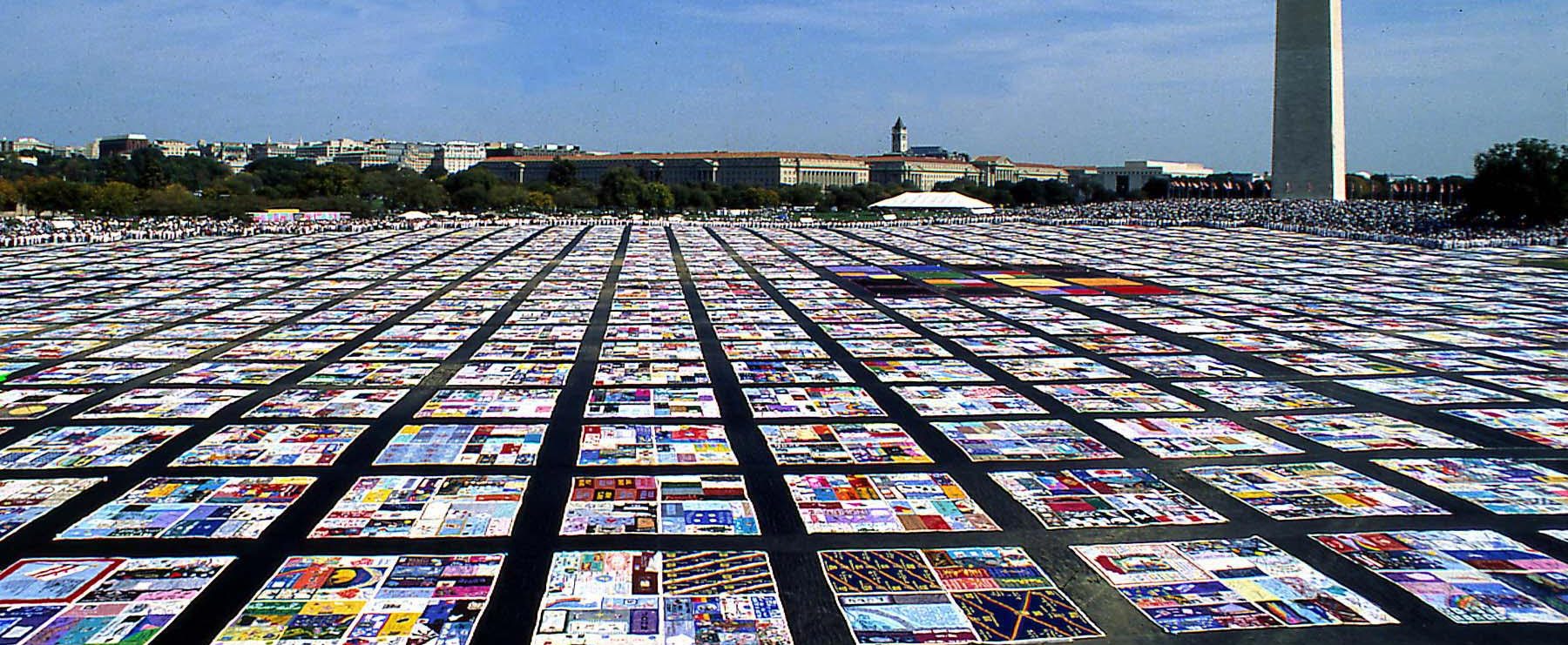A&M-Commerce and National AIDS Memorial Partner to Display AIDS Memorial Quilt Sections in Commerce
Four quilt panels will be displayed at A&M-Commerce from Nov. 29 to Dec. 3 to commemorate the more than 700,000 U.S. lives lost to AIDS since the first cases were reported 40 years ago.
Texas A&M University-Commerce and the National AIDS Memorial are partnering to bring four panels of the AIDS Memorial Quilt to Commerce as part of World AIDS Day observances on Wednesday, Dec. 1.
The quilt panels will be on display on the first-floor atrium of the A&M-Commerce Nursing and Health Sciences Building from Nov. 29 through Dec. 3. The display is free and open to the public. An opening reception will be hosted by the Office of Intercultural Engagement and Leadership in collaboration with the College of Education and Human Services on Dec. 1 from 11 a.m. to 12 p.m.
The quilt was created nearly 35 years ago during the darkest days of the AIDS pandemic by gay rights activist Cleve Jones.
While planning a march in 1985, Jones was devastated by the thousands of lives that had been lost to AIDS in San Francisco. He asked each of his fellow marchers to write on placards the names of friends and loved ones who had died. He and others stood on ladders taping these placards to the walls of the San Francisco Federal Building.
The wall of names looked like a patchwork quilt, and inspired by this sight, Jones and friends made plans for a larger memorial. In 1987, a group of strangers began gathering in a San Francisco storefront to document the lives they feared history would neglect. Their goal was to create a memorial for those who had died of AIDS, and to thereby help people understand the devastating impact of the disease. This served as the foundation of the NAMES Project AIDS Memorial Quilt and later that year, nearly 2,000 of its panels were displayed on the National Mall in Washington, D.C.
Today, the quilt has grown to more than 50,000 panels, with more than 110,000 names stitched into its fabric. It weighs 54 tons, stretches more than 50 miles in length, and is the largest community arts project in the world.
The quilt is now part of the National AIDS Memorial, which oversees its preservation, care, storytelling programs and community displays.
“We are honored to work together with the National AIDS Memorial to bring the quilt to our community for World AIDS Day and share its stories of hope, activism, healing and remembrance,” said Jayson Douglas, director of Intercultural Engagement and Leadership.
He continued: “The quilt sections on display connect the story of AIDS directly to the work we do to provide services, educate and raise greater awareness about HIV today. The quilt prompts important reflections about the tremendous loss of life, helping us to remember those we've lost, ensure their lives are never forgotten, and provide a sense of hope for the future.”
This year marks 40 years since the first cases of AIDS were reported in the United States. During the four decades since, more than 700,000 U.S. lives have been lost to AIDS, and there is still no cure. Today, HIV is on the rise, particularly among young people, communities of color and in Southern states. Quilt displays are used to raise awareness about the story of AIDS, prevention, treatment and resources available within the community.
John Cunningham is CEO of the National AIDS Memorial.
“The issues our nation has faced in the past two years—a raging pandemic with hundreds of thousands of lives lost, social injustice, health inequity, stigma, bigotry and fear—are also the issues faced throughout four decades of the AIDS pandemic,” Cunningham said. “The quilt is a powerful teaching tool that shares the story of HIV and AIDS, the lives lost, and the hope, healing, activism and remembrance that it inspires.”
A&M-Commerce worked together with the National AIDS Memorial to curate the selection of quilt panels for display, which feature panels from the region—including the Dallas and Fort Worth metroplex—made to honor and remember the names of friends and loved ones lost to AIDS.
View the AIDS Memorial Quilt in its entirety and search for names on the quilt at www.aidsmemorial.org/quilt.
(Photo courtesy of National Institutes of Health)
More Press Release
View All Press Release
Dr. Nancy Albers Named Dean of the College of Business at East Texas A&M University
Dr. Albers is poised to build on the College of Business’s tradition of excellence.

Morris Recreation Center Prepares for Transformative Expansion
The expansion reflects Campus Recreation’s ongoing commitment to serving the university population and the surrounding community.

ETAMU Music Faculty Named A&M System Regents Professor
Dr. Brian Zator, East Texas A&M University professor of music and percussion director, was recently named a Texas A&M University System Regents Professor for the 2023-24 fiscal year.



